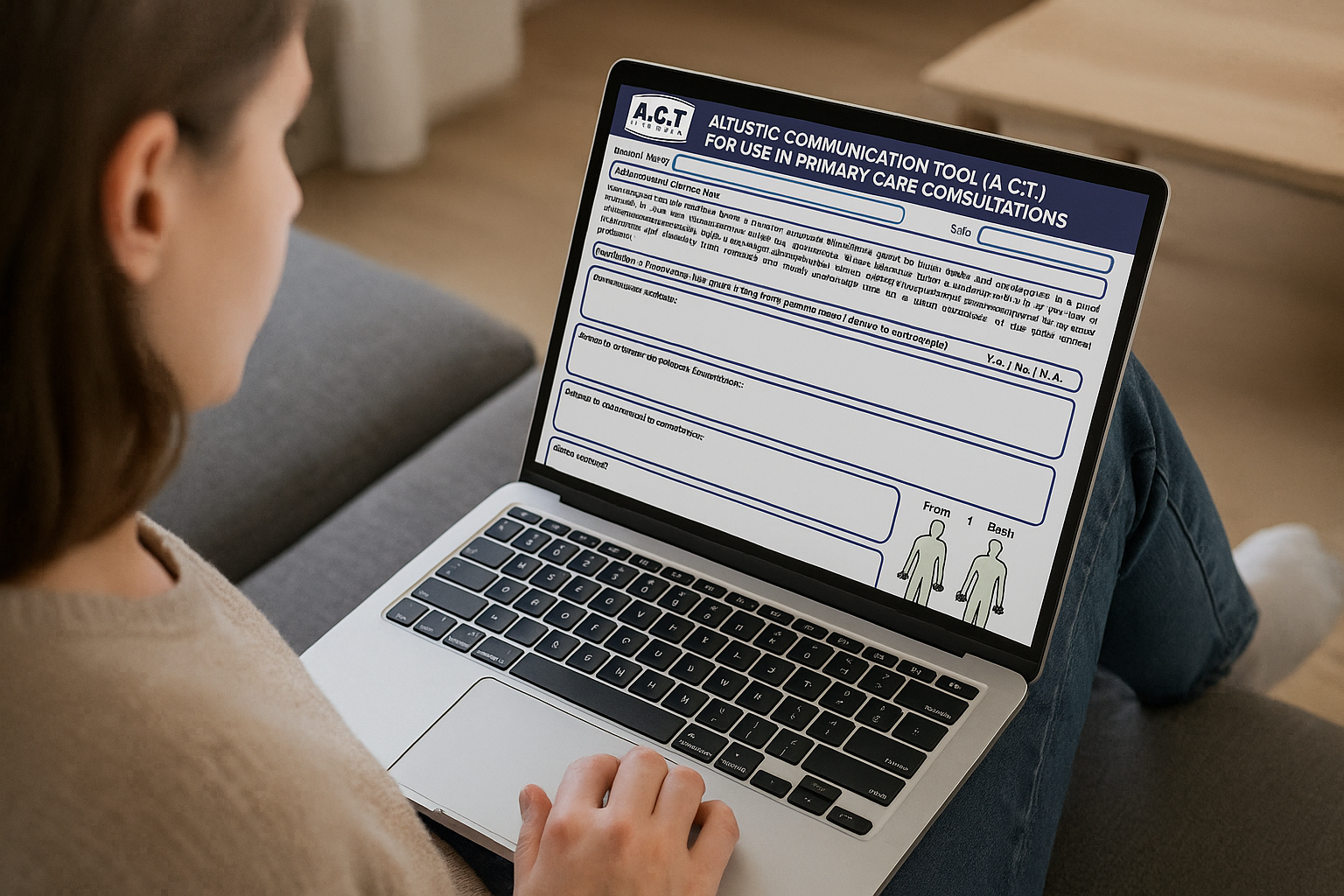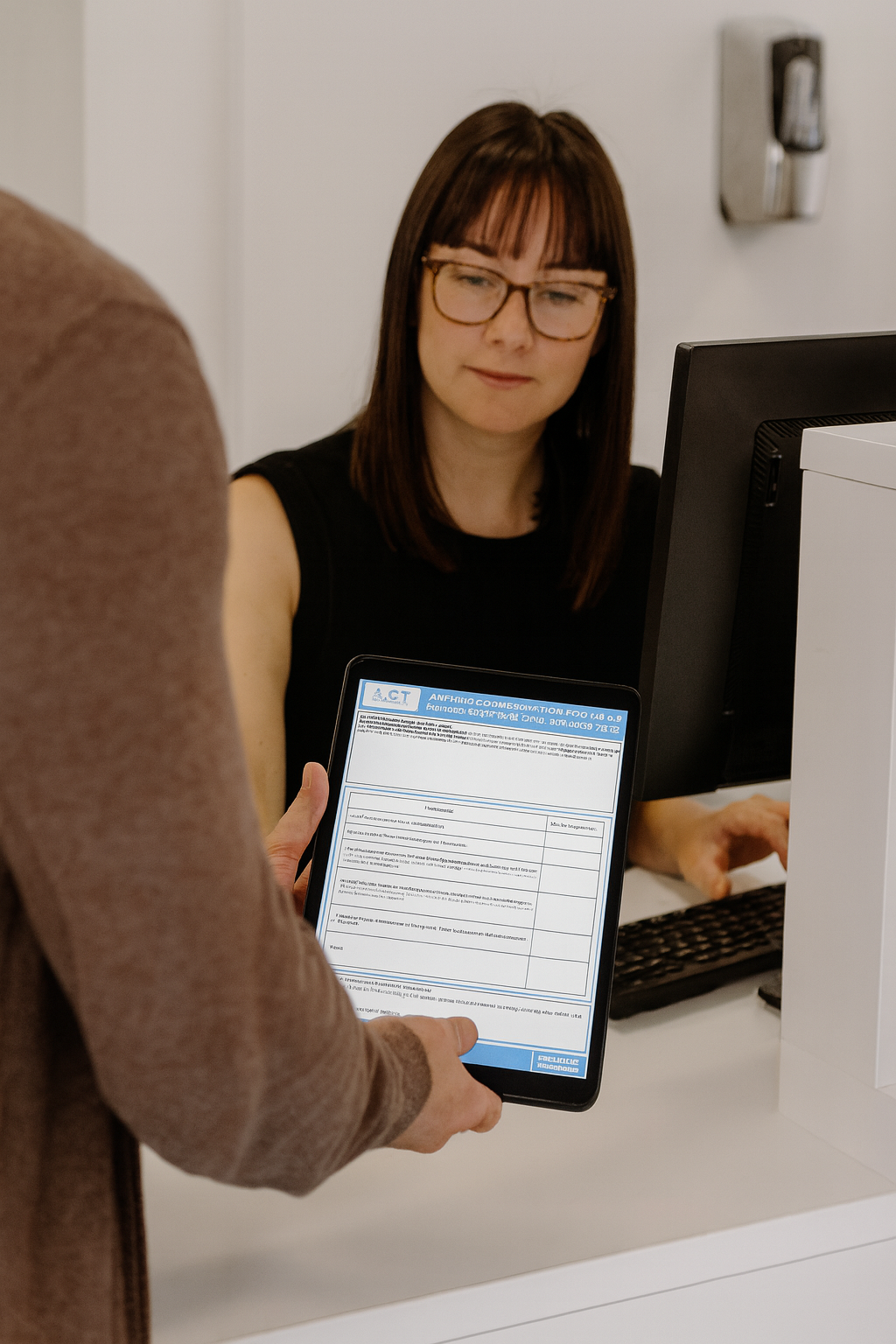The A.C.T. is designed to be simple, flexible and easy to use. You can use it in the way that works best for you.
It helps autistic patients prepare for healthcare appointments and share important information with healthcare professionals. Here’s how it works:
1. Complete the A.C.T. before your appointment
Fill out the A.C.T. in a calm, quiet space where you can take your time. You can do this at home, with support if needed.
You can fill it out online or print a blank copy to fill in by hand.
The form includes two sections:
For care navigators/reception staff to help you with any adjustments while waiting for your appointment (e.g., waiting in a quiet area).
For clinicians to provide information about:
The reason for your appointment
Any symptoms you're experiencing
How you prefer to communicate
Guidance notes (written and audio versions) are included to help you complete the A.C.T.
You do not need to write long answers—short and clear ones are best.

2. Submit the A.C.T. to your healthcare provider
Bring the completed A.C.T. to your appointment.
Hand/show the appropriate section to the receptionist/care navigator to request appropriate reasonable adjustments while you are waiting for your appointment.
The second section should be shown/handed to your clinician at the beginning of your appointment or it can be attached to any online triage system (e.g. Patches)
If your surgery accepts forms in advance, you can send it beforehand by email—but the strength of the form lies in the fact that it is owned by you, the patient. Having a copy with you (paper-based or electronic) ensures the information won’t go missing and that it will be prioritised during your consultation.

3. Your healthcare provider uses it during the consultation
Your healthcare professional will use the information you’ve provided to:
- Understand your concerns right away
- Adjust how they speak or interact with you
- Focus on the things that matter to you
- Make the appointment less stressful
They may also refer back to the form to make sure they’ve answered your questions and explained the next steps clearly.

4. Take the form with you
After the appointment, you can take your A.C.T. form home with any added notes if this is helpful.
Tips:
- You can use the A.C.T. for any type of primary care appointment (e.g.—routine check-ups, new concerns, or follow-ups).
- You do not need a clinical autism diagnosis to use the form.
